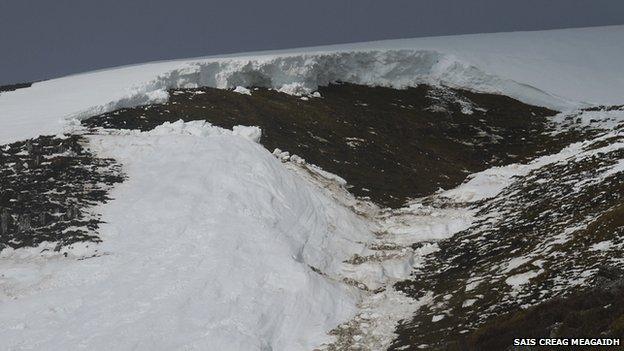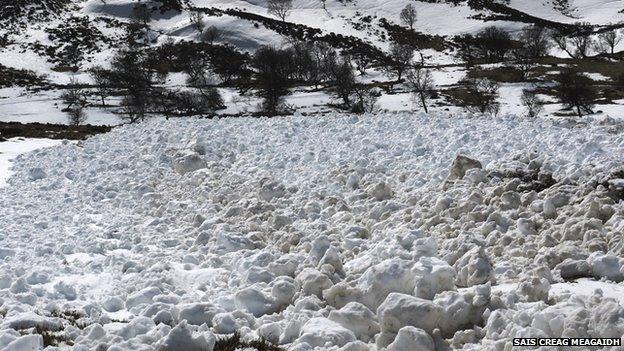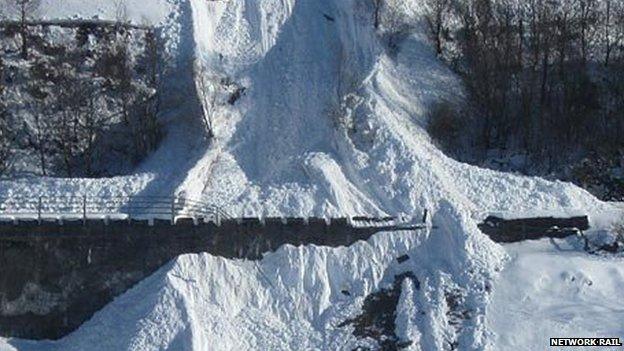Avalanche 'big enough to bury car' recorded in Highlands
- Published

The avalanche at Coire Ardair
An avalanche of a scale big enough to bury a car has been recorded in the Scottish Highlands.
The snow slide at Coire Ardair near Creag Meagaidh has been described as "a full depth size three event".
Avalanches are measured on an international scale of one to five. Size five slides are big enough to destroy a village or large forest.
The Sportscotland Avalanche Information Service (SAIS) said a size three slide at the location was uncommon.
Climbers said avalanches of a similar scale were seen in March 2010, but did not slide to the full depth of the snow.
An SAIS Creag Meagaidh forecaster said the Coire Ardair avalanche would have made "quite a spectacle" if seen by anyone in the area at the time.

Debris from the avalanche
In a blog the forecaster said: "I've seen debris from full depth activity in Coire nan Gall, Coire Dubh and notably on Beinn a Chaorainn over the years, but never at this place in Coire Ardair.
"I guess the thing is that if the ground is steep enough with enough snow on it and the temperature/weather regime is conducive, then full depth avalanches can occur pretty much anywhere in our mountains.
"Predicting them? Where are those dice?"

Avalanche sizes
One - Could injure a person.
Two - Could injure/bury a person.
Three - Could damage/bury a car.
Four - Could destroy/bury a building or a locomotive.
Five - Could destroy a village or a large forest.

Creag Meagaidh is one of six areas covered by the SAIS. The others are Torridon, Glen Coe, Lochaber, Northern Cairngorms and Southern Cairngorms.
Seventy avalanches have been recorded so far this season, which started in December.
Last season, 350 were documented during one of the snowiest winters in Scotland's mountains in almost 70 years.

An avalanche disrupted rail services in Argyll in 2010
In March 2010, an avalanche closed the West Highland Line, external.
The risk of further snow slides from the slopes of Beinn Odhar between Tyndrum and Bridge of Orchy in Argyll prevented the track being cleared for several days.
Train services between Crianlarich and Fort William were disrupted.
Specialists had to be flown by helicopter to the remote area to examine the line.